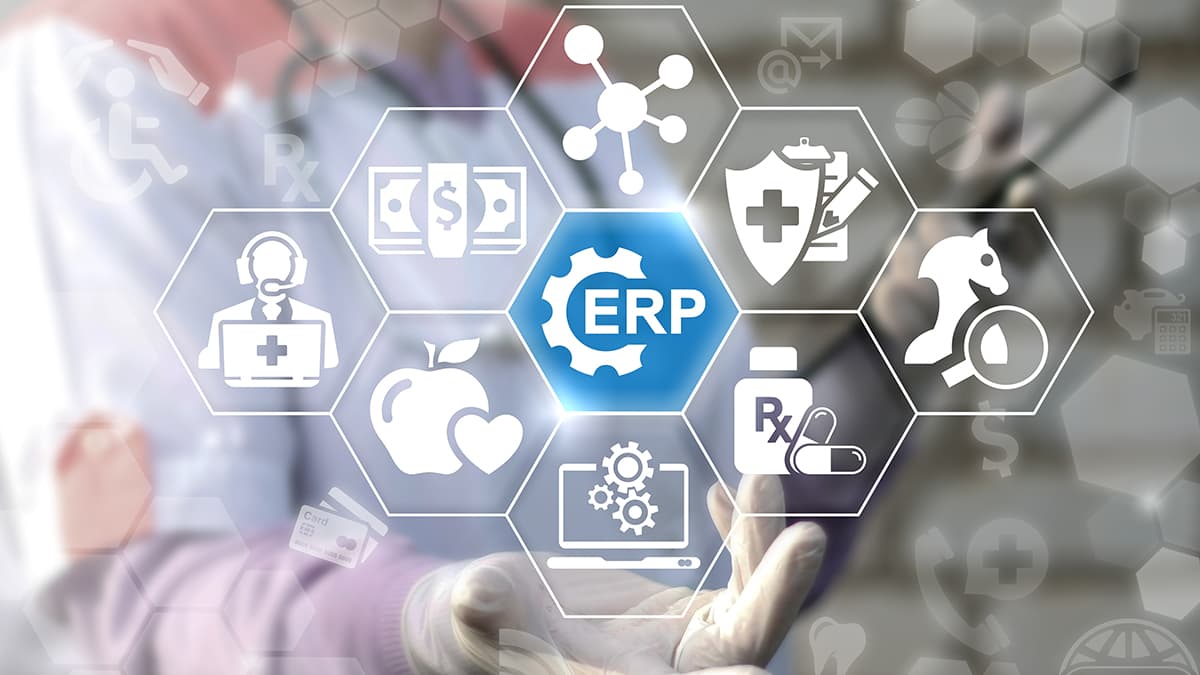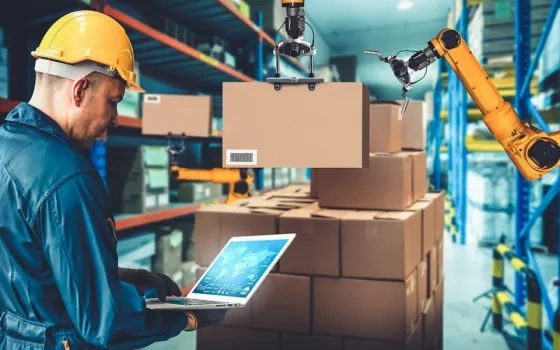In an era of rapid technological advancement, many American enterprises find themselves grappling with outdated Enterprise Resource Planning (ERP) systems, a predicament that spans multiple sectors and threatens to undermine competitiveness in an increasingly digital marketplace. In this blog, we examine the challenges posed by legacy systems, the exacerbating effect of the current technology talent shortage, and proposes a strategic solution through external staffing to create temporary, focused teams.
ERPs serve as the backbone of modern business operations, integrating various functions such as finance, human resources, supply chain management, and customer relations into a cohesive digital ecosystem. However, a significant number of U.S. enterprises continue to rely on legacy systems that were implemented in the late 1990s or early 2000s.
According to a 2023 report by Gartner, 47% of surveyed organizations are still operating with ERP systems that are more than seven years old, with 27% using systems older than 15 years (Gartner, 2023). This lag in modernization presents a multitude of challenges:
1. Legacy ERPs lack the flexibility to adapt to rapidly changing business environments, hindering an organization's ability to respond to market shifts or implement new business models.
2. Maintaining outdated systems can be exponentially more expensive than modern cloud-based solutions. A study by Forrester Research found that companies spend up to 74% of their IT budgets on maintaining legacy systems (Forrester, 2022).
3. Older systems may lack crucial security features, exposing organizations to increased cybersecurity risks. The 2023 Verizon Data Breach Investigations Report highlighted that 43% of breaches involved vulnerabilities in legacy systems (Verizon, 2023).
4. Often struggle to integrate with modern applications, creating data silos that impede informed decision-making and operational efficiency.
5. As regulatory requirements evolve, particularly in sectors like healthcare and finance, legacy systems may struggle to meet new compliance standards, exposing organizations to legal and financial risks.
The urgency of modernization is further underscored by the digital transformation initiatives accelerated by the COVID-19 pandemic. A McKinsey Global Survey of executives found that companies accelerated the digitization of their customer and supply-chain interactions and internal operations by three to four years due to the pandemic (McKinsey, 2020). This rapid shift has widened the gap between organizations with modern, adaptable systems and those still relying on legacy infrastructure.
Sector-Specific Challenges:
While the need for ERP modernization is universal, the specific challenges faced by enterprises vary across sectors. Let's examine how the lack of technology modernization impacts four key industries in the United States.
Manufacturing:
The manufacturing sector, a cornerstone of the U.S. economy, faces unique challenges.
1. Struggle to provide real-time visibility across complex global supply chains. A study by Deloitte found that 79% of organizations with superior supply chain capabilities outperform the average (Deloitte, 2021). However, many manufacturers with outdated ERPs lack this crucial advantage.
2. The Fourth Industrial Revolution, characterized by smart factories and IoT integration, requires modern systems capable of processing vast amounts of data from connected devices. Older systems often lack this capability, hindering manufacturers' ability to leverage advanced analytics and machine learning for predictive maintenance and optimization.
3. Outdated ERPs struggle to support the rapid product development cycles required in today's competitive landscape. A case study of a leading automotive manufacturer revealed that upgrading to a modern system reduced their product development time by 30% (SAP, 2022).

Retail:
The retail sector has undergone a dramatic transformation in recent years, with e-commerce and omnichannel experiences becoming the norm.
1. Lack of real-time inventory tracking capabilities necessary for effective omnichannel retail. A survey by IHL Group found that out-of-stock situations cost retailers nearly $1 trillion globally in lost sales annually (IHL Group, 2023).
2. Modern consumers expect personalized experiences across all touchpoints. Legacy systems struggle to integrate customer data from various sources, hindering retailers' ability to provide tailored experiences.
3. In the age of e-commerce, the ability to adjust prices in real-time based on market conditions, competitor pricing, and demand is crucial. Older ERPs often lack this capability, potentially leading to lost revenue opportunities.
Healthcare:
The healthcare sector faces unique challenges due to stringent regulatory requirements and the critical nature of its operations.
1. Older ERPs often struggle to integrate with modern electronic health record (EHR) systems and other healthcare-specific applications. A study by the Office of the National Coordinator for Health Information Technology found that only 55% of hospitals have the capability to electronically integrate patient information from external sources (ONC, 2023).
2. With constantly evolving regulations like HIPAA and the HITECH Act, older systems may not have the necessary features to ensure compliance, exposing healthcare organizations to significant legal and financial risks.
3. Modern healthcare delivery requires seamless coordination across various departments and care settings. Legacy systems often create data silos that impede this coordination, potentially affecting patient outcomes.
Financial Services:
The financial services sector, including banking and insurance, faces unique challenges in the era of fintech disruption.
1. Lack the sophisticated analytics capabilities required for modern risk assessment and management. A report by Accenture found that 71% of banking executives believe that legacy systems are a significant barrier to digital transformation and risk management (Accenture, 2023).
2. With increasing regulatory scrutiny, financial institutions require systems capable of generating accurate, timely reports. Outdated systems often require manual interventions, increasing the risk of errors and non-compliance.
3. Modern financial services customers expect seamless digital experiences. Legacy systems struggle to provide the real-time, omnichannel capabilities necessary to meet these expectations
These sector-specific challenges underscore the critical need for modernization of ERP systems across industries. However, the path to modernization is complicated by a significant obstacle: the current shortage of technology professionals in the United States.
The Technology Talent Conundrum

The challenges posed by such systems are further exacerbated by a severe shortage of technology professionals in the United States. This talent gap is not only hindering modernization efforts but also deepening the risks associated with maintaining legacy systems.
1. Scale of the Shortage: According to the U.S. Bureau of Labor Statistics, the demand for software developers is projected to grow 25% from 2021 to 2031, much faster than the average for all occupations (BLS, 2022). However, the supply of qualified professionals is not keeping pace. A study by Korn Ferry predicts that by 2030, more than 85 million jobs could go unfilled globally due to lack of skilled talent, with the U.S. technology sector being particularly affected (Korn Ferry, 2021).
2. ERP-Specific Skills Gap: The shortage is even more acute when it comes to professionals with specialized ERP skills. A survey by SAP found that 92% of organizations report difficulty in hiring SAP professionals, with 40% describing the shortage as severe (SAP, 2023).
3. Retention Challenges: The talent shortage has led to intense competition among employers, making it difficult for many organizations to retain skilled IT professionals.
4. Impact on Modernization Efforts: The talent shortage directly impacts an organization's ability to undertake ERP modernization projects.
5. Increased Security Risks: The shortage of skilled professionals also increases security risks associated with legacy systems. According to a study by (ISC)², the global cybersecurity workforce needs to grow by 65% to effectively defend organizations' critical assets ((ISC)², 2023).
Augmenting Teams with External Staffing:
Given the challenges posed by these systems and the current talent shortage, many organizations are turning to external staffing solutions to create temporary, focused teams. This approach offers several advantages in mitigating the risks associated with technology modernization:
• External staffing allows organizations to tap into a global pool of talent with specialized ERP skills.
• Temporary teams can be scaled up or down based on project needs, providing the flexibility that many organizations lack with their permanent workforce. This agility is crucial in modernization projects, which often occur in phases.
• Engaging external professionals can facilitate knowledge transfer to internal teams.
• While the upfront costs of external staffing may seem high, it can be more cost-effective in the long run.
• External teams, focused solely on the modernization project, can often complete implementations faster than internal teams juggling multiple responsibilities.
• External staffing can help mitigate the risks associated with modernization. A study by McKinsey found that large IT projects run 45% over budget and 7% over time, while delivering 56% less value than predicted.
The challenges posed by outdated ERP systems represent a significant threat to the competitiveness and efficiency of U.S. enterprises across various sectors. The current shortage of technology professionals further compounds these challenges, making it difficult for organizations to undertake crucial modernization initiatives.
However, by leveraging external staffing to create temporary, focused teams, organizations can navigate these challenges effectively. This approach not only provides access to specialized expertise but also offers the flexibility and scalability needed to manage complex technology modernization projects.
The article was first published on CSM Blog Named: ERP Modernization Crisis: Challenges and Solutions in the U.S. Enterprises























Comment
ERP modernization is a critical challenge for U.S. enterprises, especially when dealing with legacy systems. Overcoming obstacles like integration, data migration, and user adoption is key. A strategic approach, focusing on scalability and flexibility, will help organizations navigate these complexities and reap the benefits of modern ERP solutions.